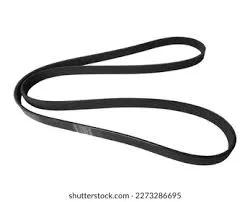- Arabic
- French
- Russian
- Spanish
- Portuguese
- Turkish
- Armenian
- English
- Albanian
- Amharic
- Azerbaijani
- Basque
- Belarusian
- Bengali
- Bosnian
- Bulgarian
- Catalan
- Cebuano
- Corsican
- Croatian
- Czech
- Danish
- Dutch
- Afrikaans
- Esperanto
- Estonian
- Finnish
- Frisian
- Galician
- Georgian
- German
- Greek
- Gujarati
- Haitian Creole
- hausa
- hawaiian
- Hebrew
- Hindi
- Miao
- Hungarian
- Icelandic
- igbo
- Indonesian
- irish
- Italian
- Japanese
- Javanese
- Kannada
- kazakh
- Khmer
- Rwandese
- Korean
- Kurdish
- Kyrgyz
- Lao
- Latin
- Latvian
- Lithuanian
- Luxembourgish
- Macedonian
- Malgashi
- Malay
- Malayalam
- Maltese
- Maori
- Marathi
- Mongolian
- Myanmar
- Nepali
- Norwegian
- Norwegian
- Occitan
- Pashto
- Persian
- Polish
- Punjabi
- Romanian
- Samoan
- Scottish Gaelic
- Serbian
- Sesotho
- Shona
- Sindhi
- Sinhala
- Slovak
- Slovenian
- Somali
- Sundanese
- Swahili
- Swedish
- Tagalog
- Tajik
- Tamil
- Tatar
- Telugu
- Thai
- Turkmen
- Ukrainian
- Urdu
- Uighur
- Uzbek
- Vietnamese
- Welsh
- Bantu
- Yiddish
- Yoruba
- Zulu
Jul . 31, 2024 21:13 Back to list
Understanding the Benefits and Applications of Moulded Poly V Belts in Modern Machinery
Moulded Poly V Belt Revolutionary Advancements in Power Transmission
The moulded poly V belt represents a significant evolution in the realm of power transmission systems. Originally designed to enhance the efficiency of power transfers in various machines, the poly V belt has continued to evolve and adapt, setting new standards in performance, durability, and versatility. This article explores the features, advantages, and applications of moulded poly V belts, highlighting their importance in modern mechanical systems.
Understanding the Design and Mechanics
The moulded poly V belt features a unique design incorporating multiple longitudinal ribs or grooves. Unlike traditional V belts that have a triangular cross-section, the poly V belt’s slender ribbed structure allows it to fit snugly into pulleys, increasing the contact area and reducing slippage. This design inherently provides better power transmission efficiency, enabling machines to operate smoothly and with minimal energy loss.
The materials used in moulded poly V belts are also a significant innovation. Typically composed of high-quality rubber compounds or synthetic materials reinforced with fabric, these belts are not only flexible but also resistant to wear, heat, and abrasions. This robust construction lends itself to prolonged service life and lower maintenance costs, making them an ideal choice for various industrial applications.
Advantages of Moulded Poly V Belts
1. High Power Transmission Efficiency One of the primary advantages of moulded poly V belts is their ability to transmit power efficiently. The unique ribbed design allows for a larger surface area in contact with the pulley, enhancing grip and reducing the chances of slippage. This property is particularly beneficial in applications where precision is crucial.
2. Compact Design The slim profile of moulded poly V belts enables them to fit in tight spaces, making them ideal for compact machinery where space is at a premium. Less bulk means easier installation and potentially lighter machinery, which can contribute to overall efficiency and performance.
moulded poly v belt

3. Reduced Noise Levels Moulded poly V belts operate with less vibration compared to traditional V belts. This can lead to quieter machinery and a more pleasant working environment, especially in settings such as automotive and HVAC systems.
4. Temperature and Chemical Resistance The advanced materials used in moulded poly V belts can withstand harsh environmental conditions. They are designed to resist heat and chemicals, making them suitable for a wide range of industrial applications, including automotive, manufacturing, and agricultural machinery.
5. Versatility Moulded poly V belts are adaptable and can be used in various applications, from small appliances to heavy-duty industrial machines. Their versatility in different sectors underscores their importance in modern engineering.
Applications Across Industries
Moulded poly V belts find use in numerous applications across various industries. In the automotive sector, they are commonly employed in alternators, air conditioning units, and power steering systems, where reliable power transfer is essential. In industrial settings, these belts are prominent in conveyor systems, pumps, and fans, often where machinery operates under variable loads. The agricultural industry also benefits from moulded poly V belts in equipment like tractors and harvesters, where durability and efficiency are paramount.
Conclusion
In conclusion, moulded poly V belts are a testament to the advancements in engineering design, material science, and manufacturing technology. Their unique features and numerous advantages position them as a critical component in the modern mechanical landscape. As industries continue to evolve, the role of moulded poly V belts will undoubtedly expand, powering the machines that drive our economy with enhanced efficiency and reliability.
-
Upgrade Power Steering Pump Belt for Smooth, Quiet Operation
NewsAug.27,2025
-
Precision Timing Belt & Chain: Engine Performance & Durability
NewsAug.26,2025
-
Precision Lathe Drive Belts: Durable & Reliable Performance
NewsAug.25,2025
-
84.5 Serpentine Belt: Durable & Precision Fit for Your Engine
NewsAug.24,2025
-
Premium Ribbed Drive Belts for Quiet Power Transmission
NewsAug.23,2025
-
High-Performance Vehicle Timing Belt for Engine Precision
NewsAug.22,2025

